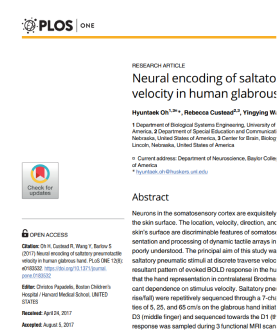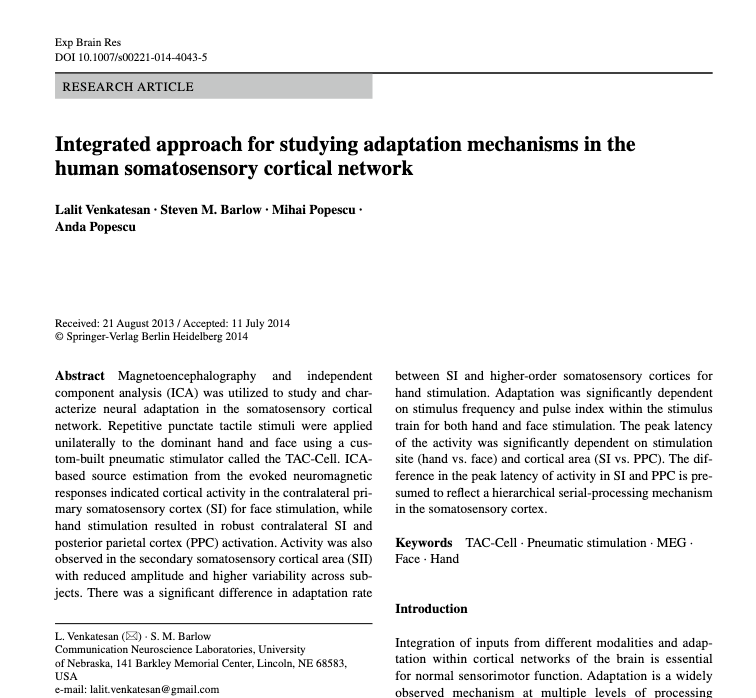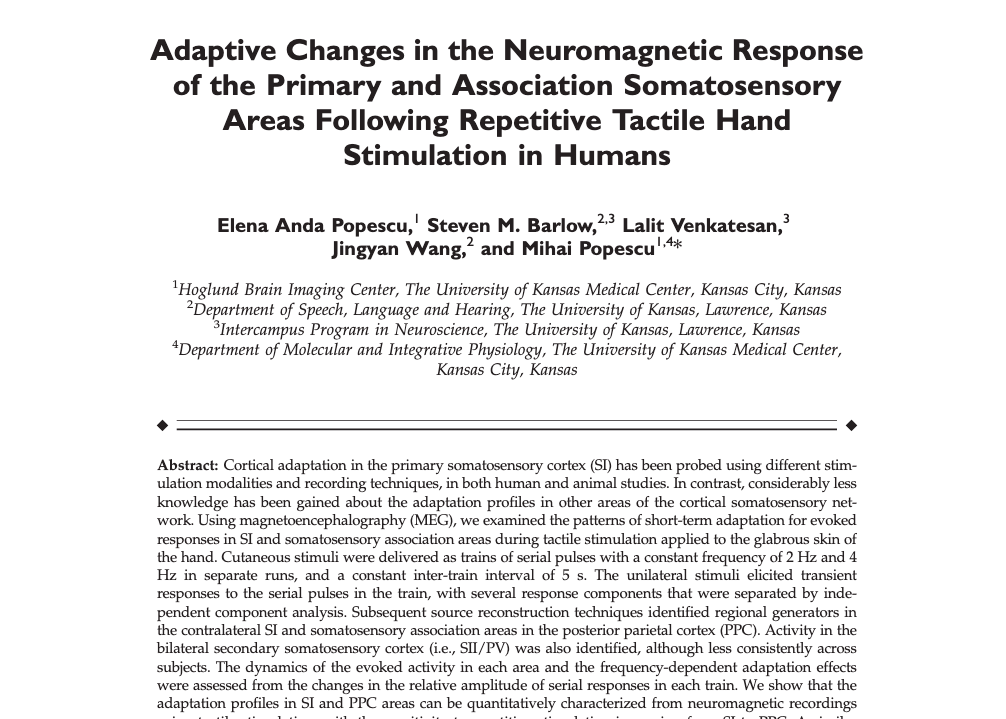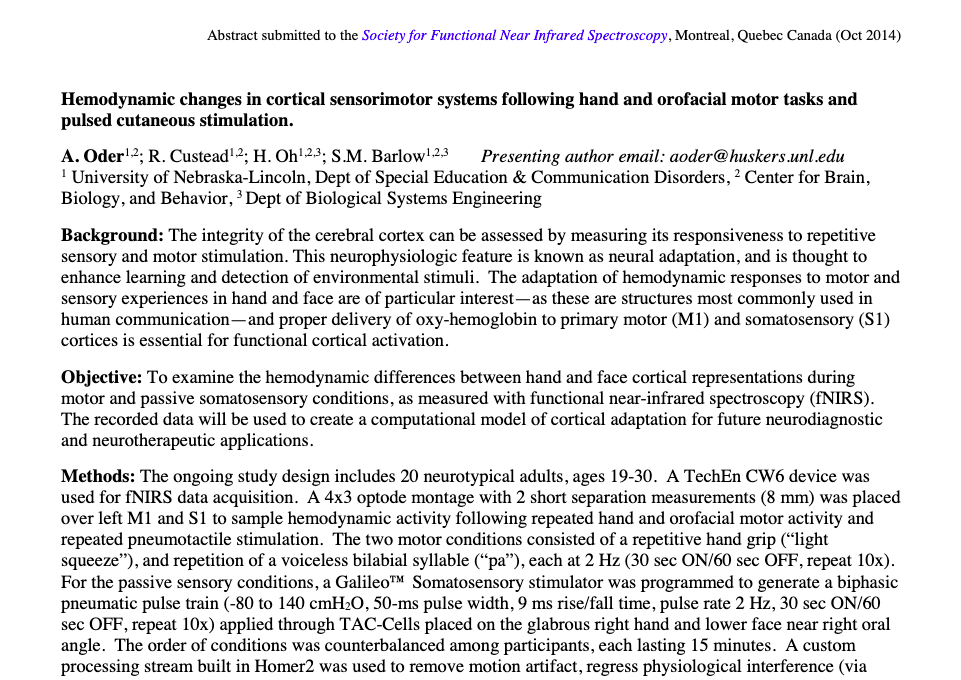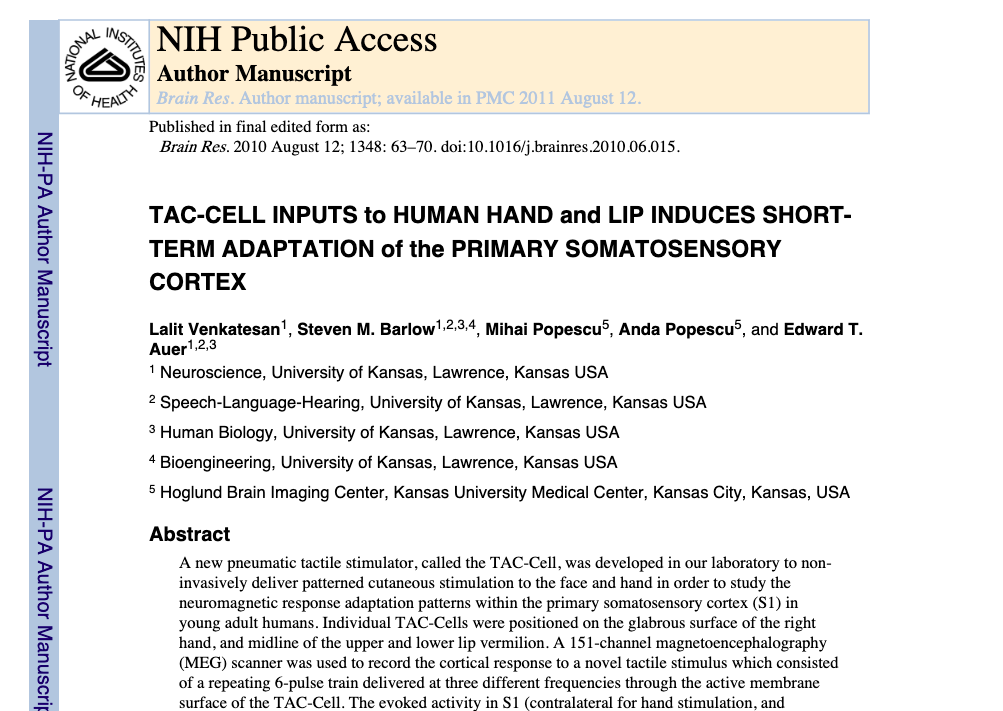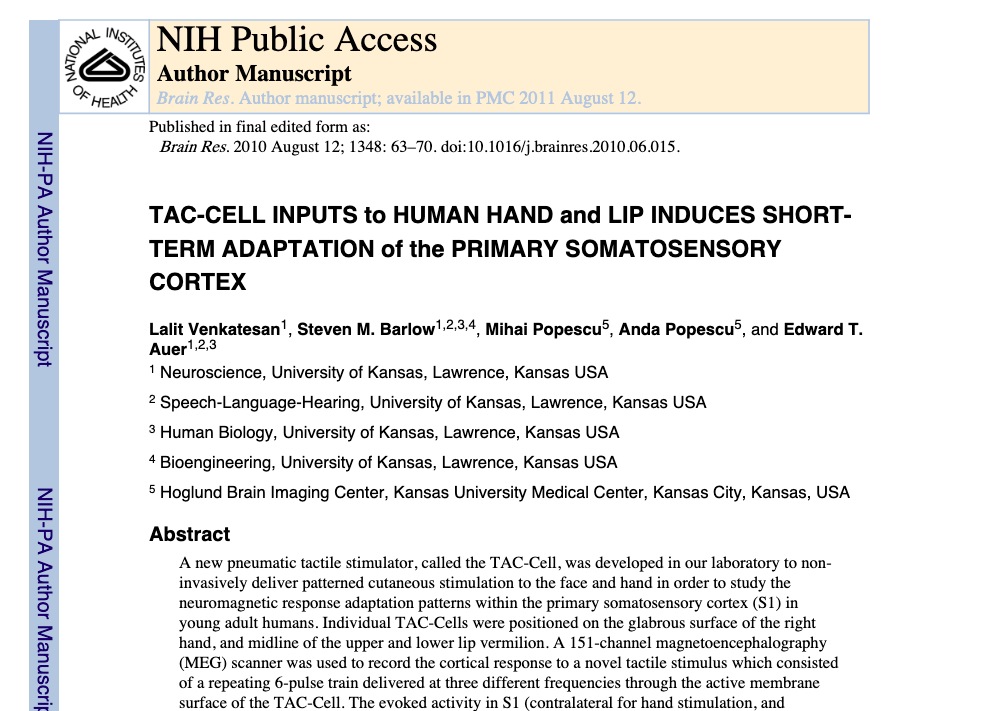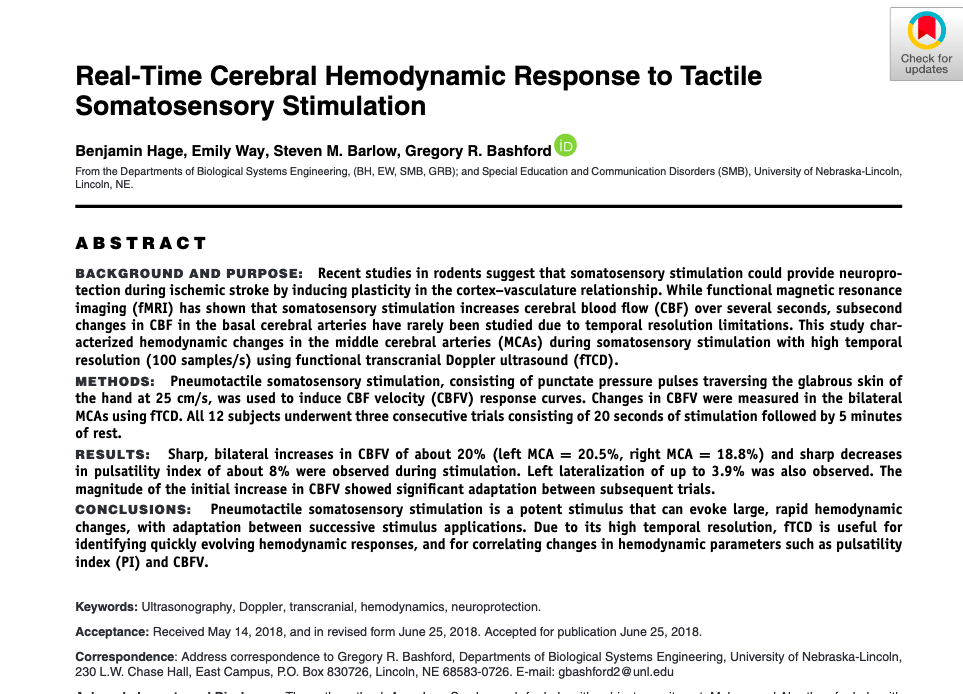Professional Papers & News
Neural encoding of saltatory pneumotactile velocity in human glabrous hand
Neurons in the somatosensory cortex are exquisitely sensitive to mechanical stimulation of the skin surface.
Integrated approach for studying adaptation mechanisms in the human somatosensory cortical network
Magnetoencephalography and independent component analysis (Ica) was utilized to study and characterize neural
Characterization of sex-based differences in the mechanical properties of human finger glabrous tissue using a fiberoptic sensor
TAC-Cell is a custom-built somatosensory stimulator that delivers pneumatic cutaneous tactile inputs to virtually any sk
Adaptive Changes in the Neuromagnetic Response of the Primary and Association Somatosensory Areas Following Repetitive Tactile Hand Stimulation in Humans
Cortical adaptation in the primary somatosensory cortex (SI) has been probed using different stimulation modalities and
Hemodynamic changes in cortical sensorimotor systems following hand and orofacial motor tasks and pulsed cutaneous stimulation.
The integrity of the cerebral cortex can be assessed by measuring its responsiveness to repetitive sensory and motor sti
TAC-CELL INPUTS to HUMAN HAND and LIP INDUCES SHORT- TERM ADAPTATION of the PRIMARY SOMATOSENSORY CORTEX
A new pneumatic tactile stimulator, called the TAC-Cell, was developed in our laboratory to non-invasively deliver patte
Brain encoding of saltatory velocity through a pulsed pneumotactile array in the lower face
Processing dynamic tactile inputs is a primary function of the somatosensory system. Spatial velocity encoding mechanism
Cutaneous stimulation of the digits and lips evokes responses with different adaptation patterns in primary somatosensory cortex
Neuromagnetic evoked fields were recorded to compare the adaptation of the primary somatosensory cortex (SI) response to
Real-Time Cerebral Hemodynamic Response to Tactile Somatosensory Stimulation
Recent studies in rodents suggest that somatosensory stimulation could provide neuroprotection during ischemic stroke by
Hemodynamic changes in cortical sensorimotor systems following hand and orofacial motor tasks and pulsed pneumotactile stimulation
We performed a functional near-infrared spectroscopy (fNIRS) study of the evoked hemodynamic responses seen in hand and




